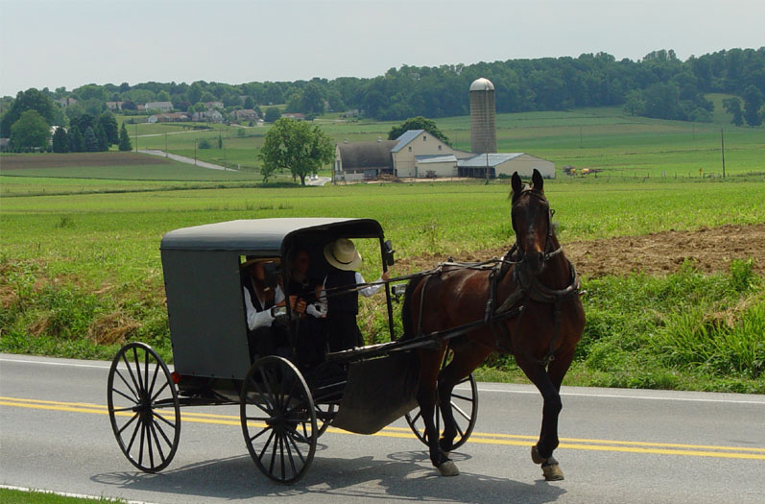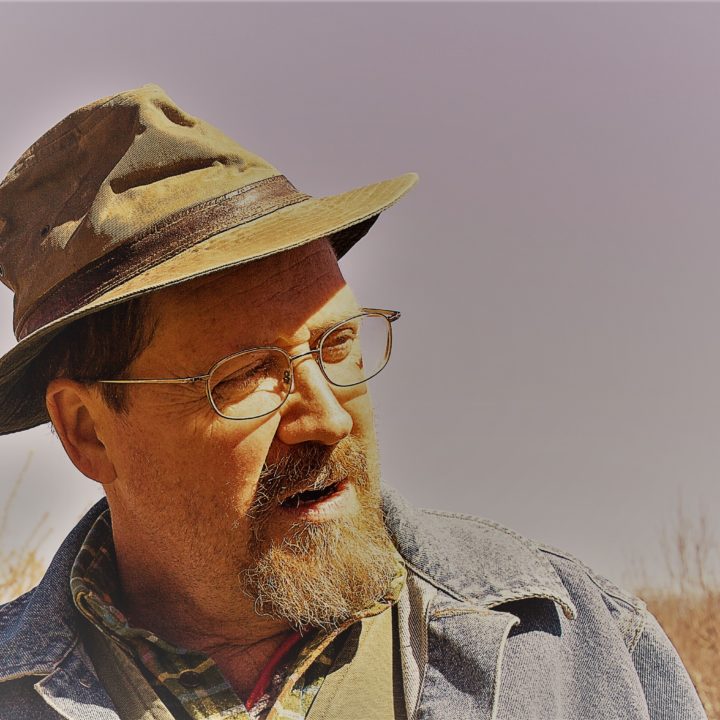The mercury is already pushing the mid-80s by afternoon, and clouds are beginning to build in the west. I sit in my car in a Pennsylvania parking lot next to a mattress store, watching. Across a field, a boy is perched on the bench seat of a hay wagon, holding the reins to a team of Belgians. Farther back stands an older boy. He is reaching down and catching square bales as they are tossed up to him from other boys on the ground. He already has stacked a layer three-high on the 16-foot wagon. The driver, maybe 8 to 10 years old, twitches the reins and moves the load forward every few minutes before again coming to a stop. Up ahead, the father is driving a second team that pulls a gasoline-powered baler, spitting bales onto the ground at regular intervals as it tracks the windrows of hay.
The scene I observe is a Hieronymus Bosch painting with a twist: In the background of the tableau, the family of man and boys gathers forage for the winter. At the forefront, a stoplight blinks commands on a four-lane highway, the center of a tortured world of strip mall architecture, where the obese and the tattooed pour onto the roads and the pavement groans under bumper-to-bumper traffic. A boy, the same age as the ones working the field, sits in a car, screen-staring his young years away. A man in the front passenger seat stares ahead, oblivious to any other way of living. A Chick-fil-A and an Olive Garden shoehorn the paved landscape and the fields of the family at work.
Farther down the road, back in the stream of modernity, I pass three different buggies of Amish women, all driving teams, their children aboard, moving down the highway at five to eight miles an hour. If the journey is indeed more important than the destination, then these women and their children have learned the lesson well. They are chatting and laughing, as their fellow travelers, mere feet away, are entombed and unsmiling.
Do they ever glance at the cars and wonder, May Swenson-like: “Those soft shapes, shadowy inside the hard bodies — are they their guts or their brains?”
I pull into my hotel parking lot, retrieve my luggage, check in, and go up to my room. I open the curtains to glimpse the last of the day. Across another parking lot, across a road, lies another field. In the dying evening light, another man and a team of Percherons pull a manure spreader across the pastures back to the barn. On the seat, on either side of him, are his two sons, sharing an unheard conversation.
Standing at the window of the third floor, in isolation and sadness and cowardice, I think, we chase our lives across the decades seeking a sense of purpose. Yet our gaze is averted from the possibilities and the wisdom gained from living slowly, at five to eight miles an hour.
……………………………………………………………….
Reading this weekend: The Ends of the World: volcanic apocalypses, lethal oceans, and our quest to understand earth’s past mass extinctions, by Peter Brannen. An interesting read about all the ways life has been wiped out in the past on this planet. And, it gives you a nice perch from which to contemplate the same.
Teaser photo credit: By it:Utente:TheCadExpert – it:Immagine:Lancaster_County_Amish_03.jpg, CC BY-SA 3.0, https://commons.wikimedia.org/w/index.php?curid=1249760






